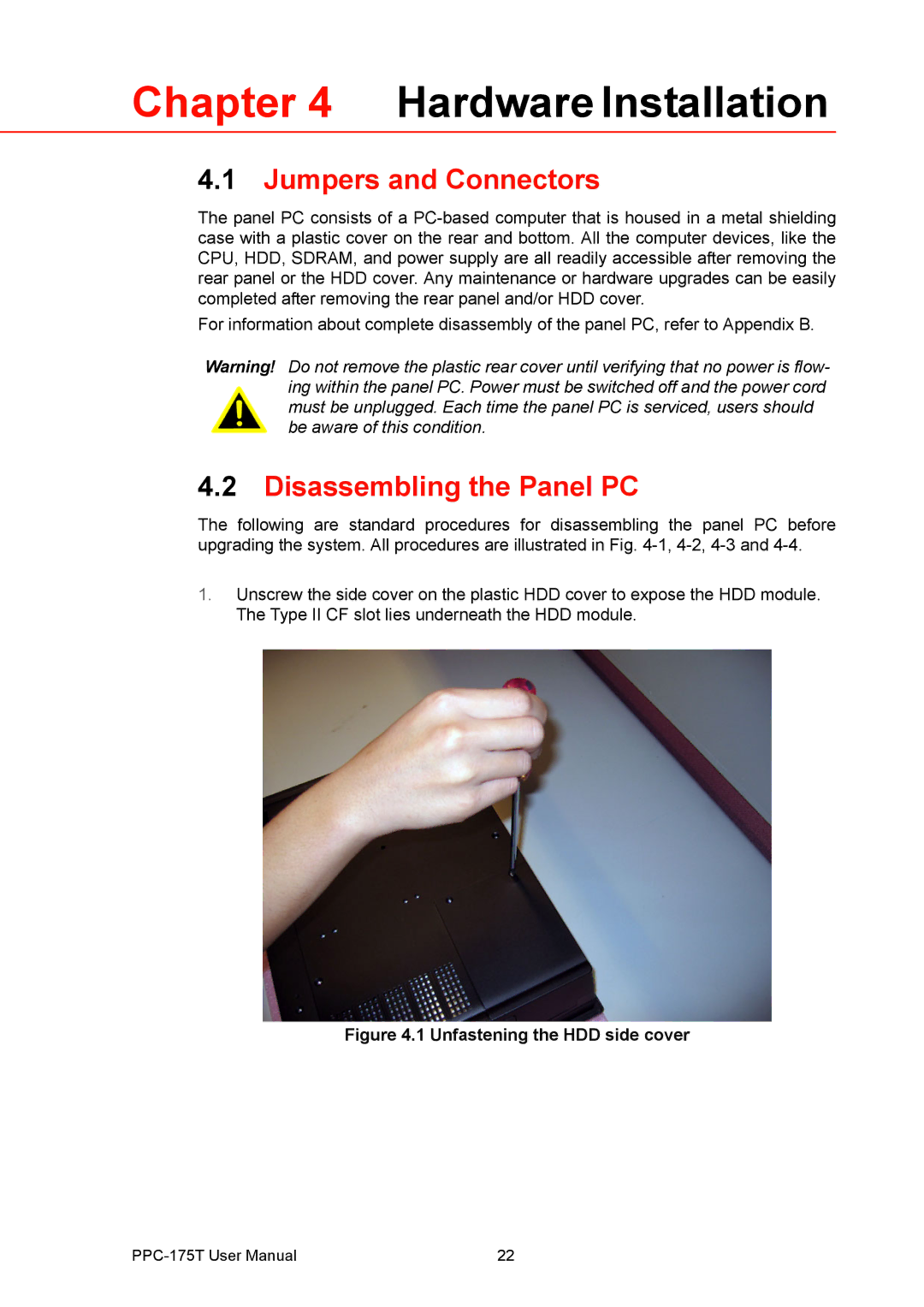PPC-175T specifications
The Advantech PPC-175T is a powerful and versatile panel PC designed to meet the demands of industrial environments. It combines a rugged design with advanced computing capabilities, making it an ideal solution for various applications such as factory automation, transportation, smart buildings, and system control.One of the standout features of the PPC-175T is its 17-inch touch screen display. The display boasts an LED-backlit panel that delivers crisp and vibrant visuals, crucial for monitoring and controlling industrial processes. The projected capacitive touchscreen technology allows for multi-touch operation, enhancing user interaction and making it easier for operators to navigate through complex interfaces.
Performance-wise, the PPC-175T is powered by Intel's latest processors, which ensure smooth and efficient operation. Depending on the configuration, users can choose from various CPU options, allowing for flexibility based on processing requirements. The system supports up to 8 GB of RAM, which is essential for running multiple applications simultaneously, ensuring that users can efficiently manage tasks without lagging.
In terms of connectivity, the PPC-175T comes equipped with multiple I/O options, including USB, Ethernet, and COM ports, enabling easy integration into existing systems. The dual LAN ports provide redundancy and enhance network reliability, which is crucial for mission-critical applications. Furthermore, the panel PC supports a wide range of communication protocols, making it adaptable to different industrial systems.
The rugged construction of the PPC-175T is another significant characteristic. It features an IP65-rated front panel, ensuring protection against dust and water, which is vital for operation in harsh environments. The fanless design further enhances its durability by minimizing moving parts, reducing maintenance requirements, and extending the lifespan of the device.
Additionally, the PPC-175T is designed with energy efficiency in mind. Its low power consumption makes it an environmentally friendly option while also reducing operating costs. The ability to mount the device in various configurations, such as panel, wall, or VESA mount, adds to its versatility, allowing it to fit seamlessly into different operational settings.
Overall, the Advantech PPC-175T stands out as a reliable and feature-rich panel PC, making it an excellent choice for industries looking to enhance their operational efficiency and productivity. Its combination of robust performance, durable design, and extensive connectivity options positions it as a leader in the industrial computing space.

